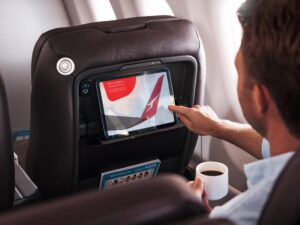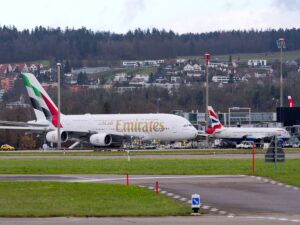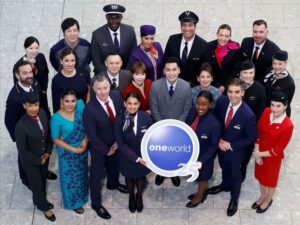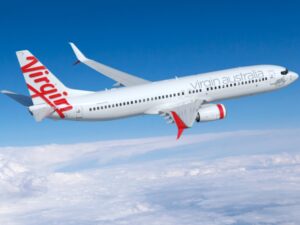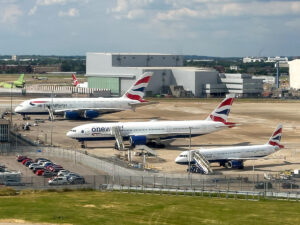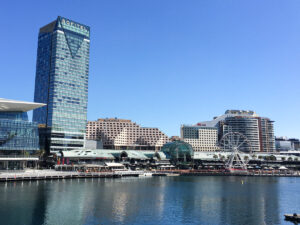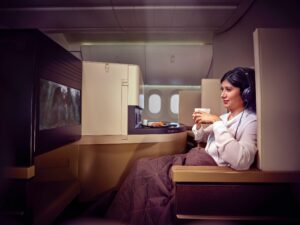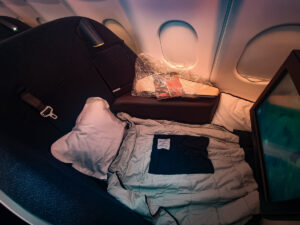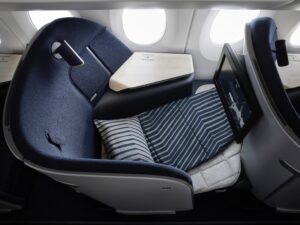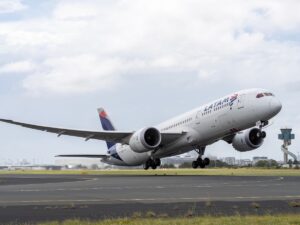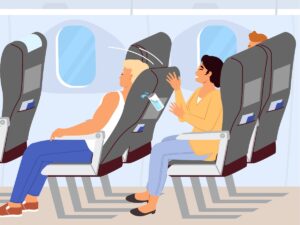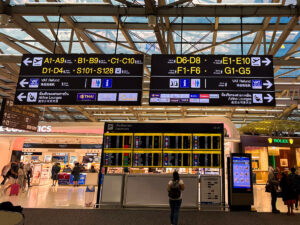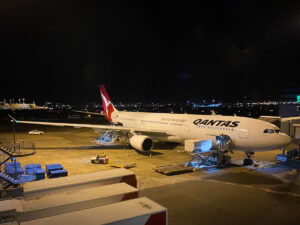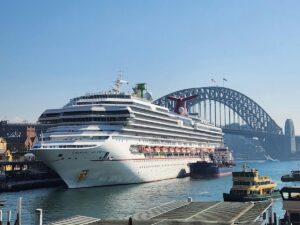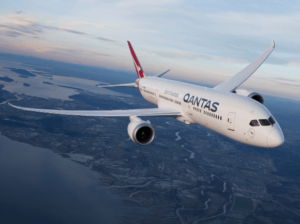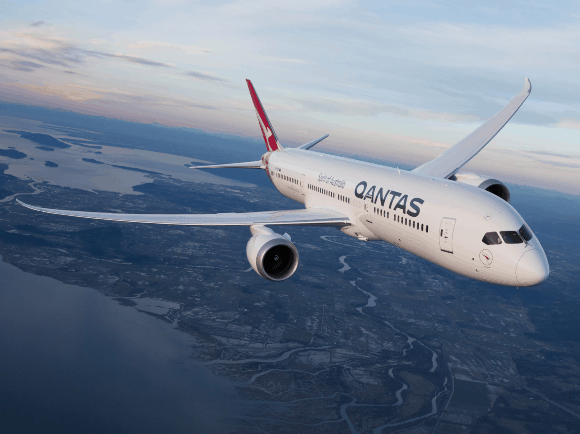
Qantas plans to replace the Boeing 747 with Boeing 787-9 Dreamliners on the Sydney-Johannesburg route from 28 March 2021, ending months of speculation about the future of the route and Qantas’ Boeing 747 fleet.
Qantas has just released its flight schedules for travel beyond 28 March 2021, which marks the beginning of the IATA 2021 northern summer scheduling period. From this date, the Sydney-Tokyo route is also earmarked to switch from a Boeing 747-400ER a to Boeing 787-9 service. Other than Sydney-Santiago, which will switch to a Boeing 787 service later this year, Sydney-Johannesburg and Sydney-Tokyo were the only remaining Qantas routes to be served by the airline’s ageing Boeing 747s.
There will be no changes to the schedule of QF63 from Sydney to Johannesburg, nor the return QF64, when the route switches to Boeing 787-9s next March. The Qantas website has been updated to show the new aircraft type.
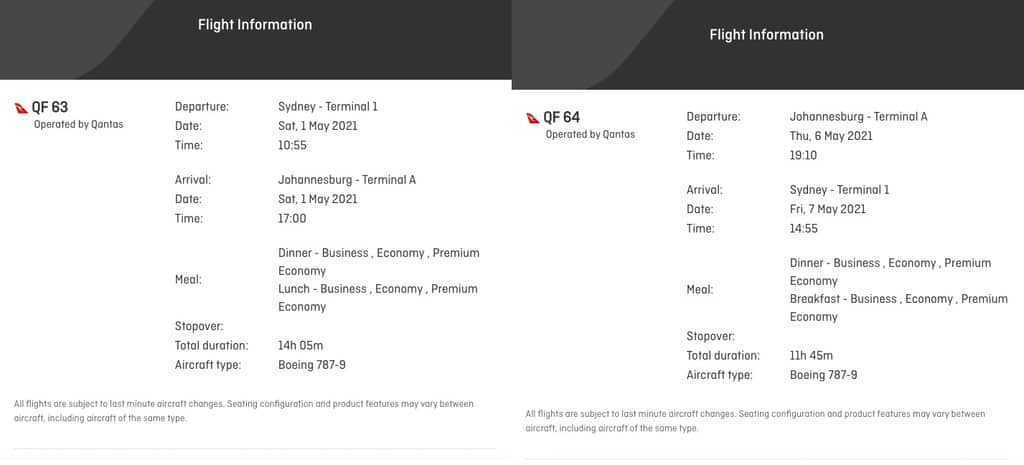
The Boeing 787 offers Economy, Premium Economy and Business seating – just like the Boeing 747 – but there are fewer seats in each cabin. In particular, the aircraft change will result in a substantial reduction of available seats in Economy. That could lead to higher airfares on the route.
But Qantas does plan to increase the frequency of its Sydney-Johannesburg service from 6x weekly to daily, with the addition of a flight on Wednesdays. The aircraft change is also good news for Business class passengers, who will soon enjoy Qantas’ Business suites on the route instead of the older 747 SkyBeds.
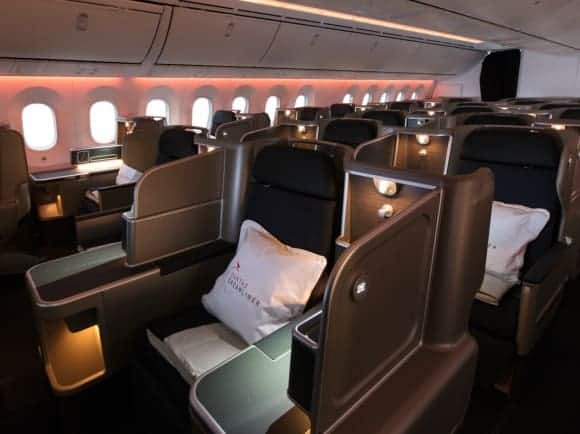
Of course, all of this is subject to change given the current uncertainty surrounding international travel and when Australia’s borders may re-open. Qantas is currently operating just 1% of its usual international flight schedule, and flights from Sydney to Johannesburg have been grounded since the end of March. Regular Qantas flights to South Africa are currently scheduled to resume on 1 August 2020, but this is extremely unlikely to happen. Qantas simply hasn’t extended its international flight cancellations beyond August yet (delaying the inevitable).
When international travel resumes, Qantas could be the only airline with direct flights from Australia to South Africa. Before the international travel shutdown, South African Airways also flew from Perth to Johannesburg. But South African Airways is in deep financial trouble and is unlikely to survive (in its current form, at least). If a rebooted South African Airways does not return to Perth, Qantas could be interested as it was very close to launching Perth-Johannesburg flights in 2018.
Could EDTO/ETOPS regulations now affect the Sydney-Johannesburg flight?
Qantas’ flights to South Africa, particularly the daytime QF63 service, often fly far enough south to get a good glimpse of the Antarctic icebergs. But with the switch from the four-engined Boeing 747 to the twin-engine 787, ETDO regulations may require Qantas’ Sydney-Johannesburg flights to track further to the north, in order to be closer to possible diversion airports.
EDTO stands for “Extended Diversion Time Operations” and was formerly known as ETOPS, or “Extended-range Twin-engine Operational Performance Standards”. EDTO regulations require aircraft with only two engines to remain within a certain distance from a suitable diversion airport at all times during the flight. This becomes an issue on long flights over water, such as Sydney-Johannesburg which is thousands of kilometres from the nearest airport during the middle of the flight. ETDO rules do not apply to aircraft with four engines, so have not been an issue for Qantas’ previous Boeing 747 flights on the Sydney-Johannesburg route.
The map below shows the direct “great circle” route from Sydney to Johannesburg (on westbound flights, the flight path is often further to the south than the most direct route due to strong headwinds). The light grey/purple area on the map depicts the area that Qantas would not be allowed to fly through under a requirement to remain with 240 minutes of an airport. The smaller, lighter grey area shows what would be off-limits under a 330-minute rule.
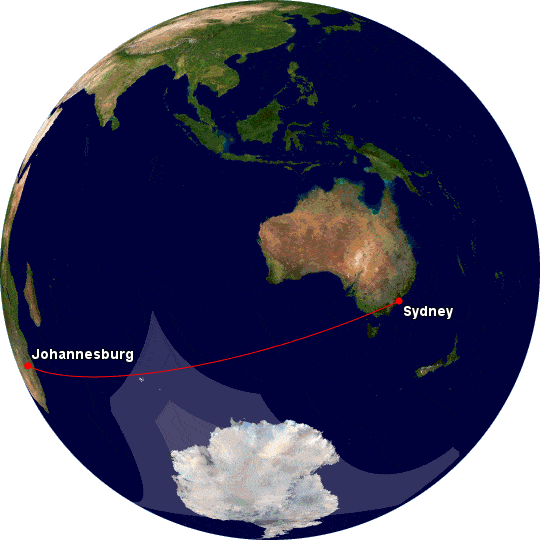
As you can see, a requirement to remain within 240 minutes of a diversion point would result in a significant deviation to the usual flight path – leading to longer flight times and a higher fuel burn. But a 330-minute EDTO rule is manageable.
In March 2010, Virgin Australia attempted to launch flights from Melbourne to Johannesburg using Boeing 777s. The route was not profitable and lasted less than a year. At the time, ETOPS requirements for the Boeing 777 required Virgin to remain within 180 minutes of an airport at all times. This meant Virgin had to fly a much longer, more northerly flight path than would otherwise be necessary, and was one of the main reasons Virgin couldn’t make money on the route.
The future of Qantas’ Boeing 747 fleet
Qantas now has just three Boeing 747-400ERs left in its fleet after another one was flown to the United States for scrapping yesterday.
Although there is a possibility that these planes will fly for Qantas again, and there are still some scheduled Qantas 747 flights, it is highly likely that they will all be retired before regular international travel resumes. Although there has been no official announcement yet about this, it is likely that the last Qantas 747 passenger flight was QF28 on 28 March 2020.
As demand for international travel plummets, Qantas has also deferred new aircraft orders and suspended its A380 refurbishment program with just half of the airline’s twelve Airbus A380s having been upgraded. All A380s were supposed to be upgraded by the end of this year, but Qantas CEO Alan Joyce is now saying that some or all A380s could instead be retired if post-COVID demand for air travel does not pick up.


